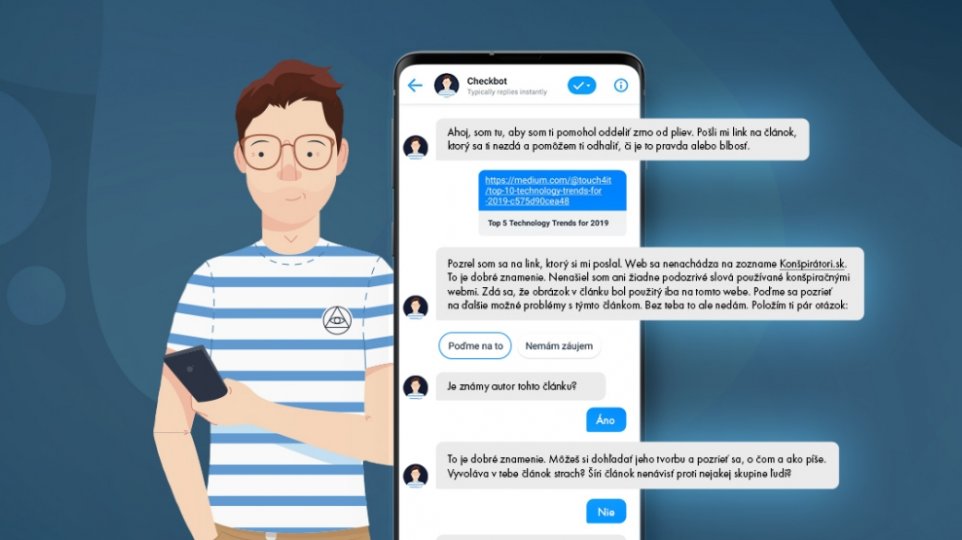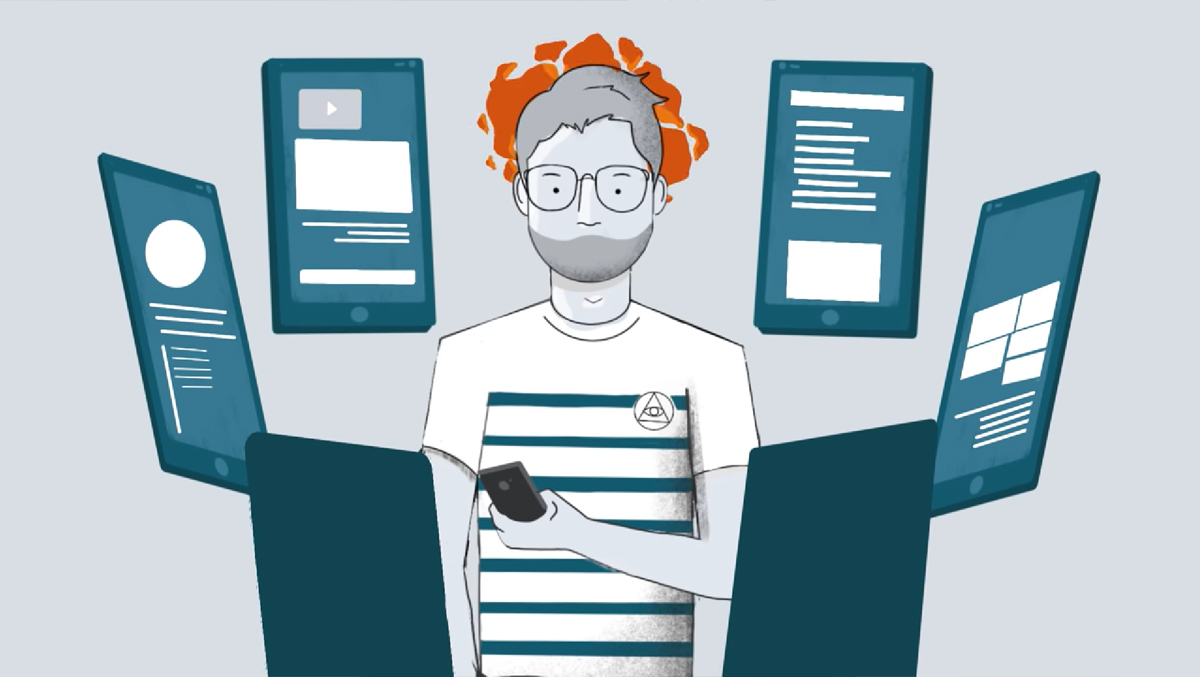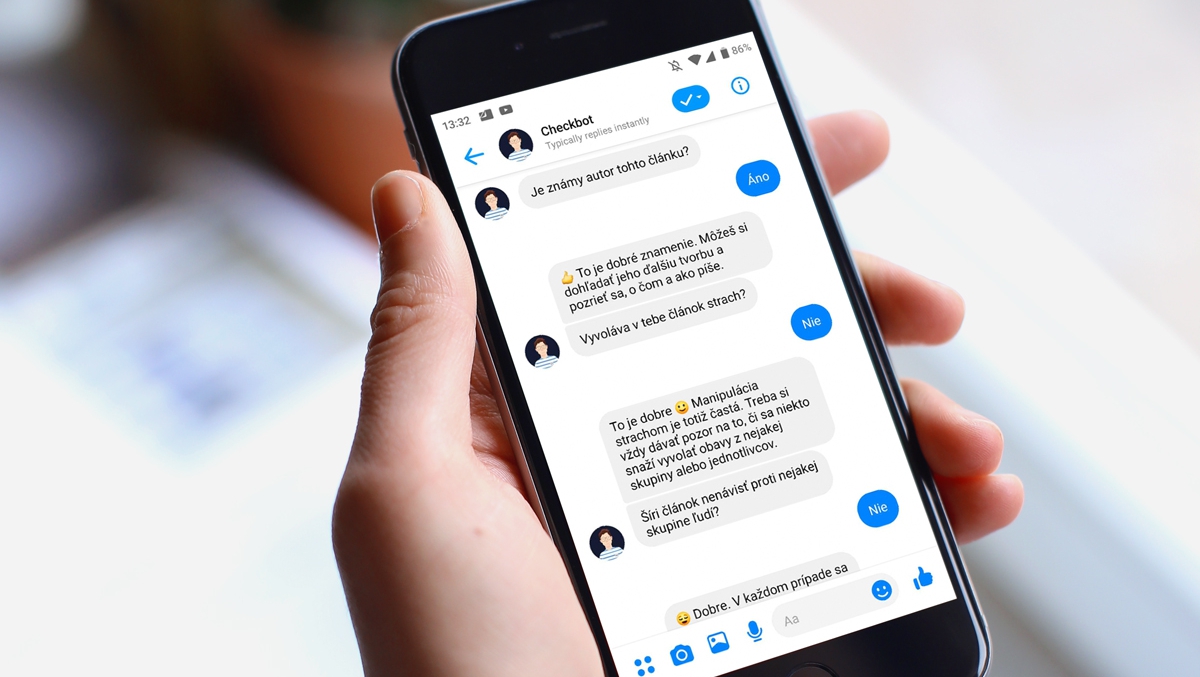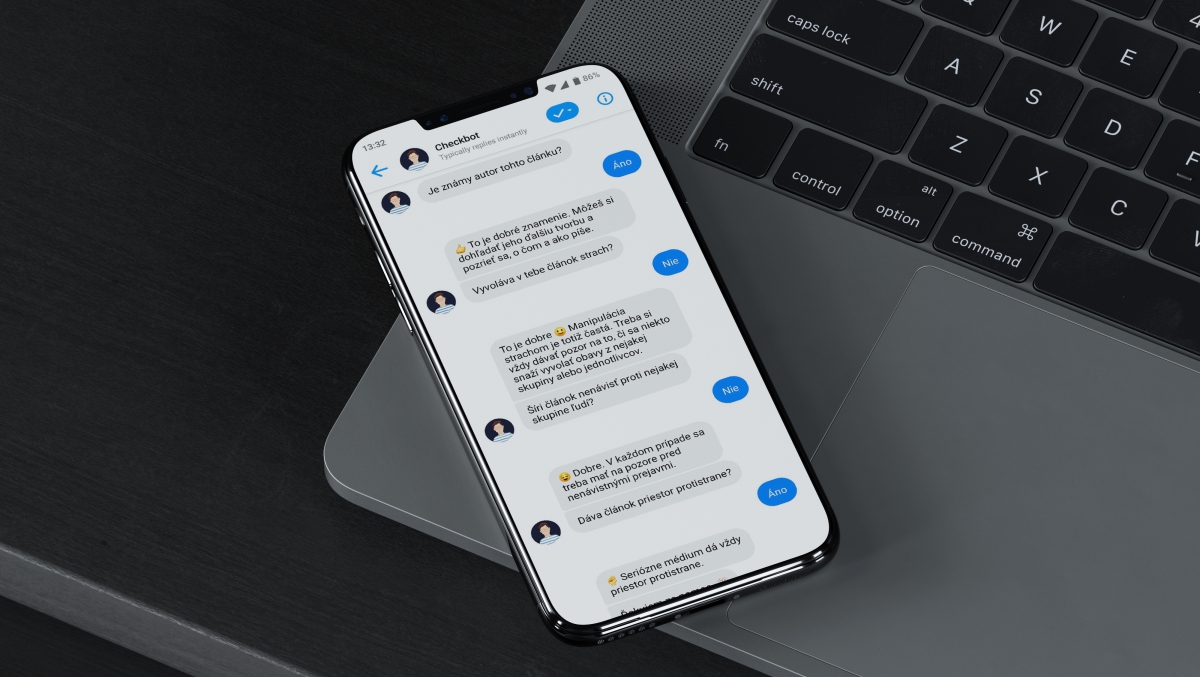Is it a conspiracy? Ask the chatbot

In the world of information it’s hard to distinguish between what is true and what is not. A bunch of sources provide different point of view on the situation and it can be really confusing.
What are the options?
Some sources have enough views and have a lot of fans by even playing the fair game, posting only verified information. But on the other hand, there are also the ones trying to attract the attention of their fans in an inappropriate way. It’s everyone’s free choice to choose their trustworthy source of information, but there are some good points to keep in mind.

How to choose?
First of all, why do you need to choose if there’s technology available to help you? For our client, we created a conspiracy chatbot to whom you can send a message containing a URL. Afterward, the chatbot will check the webpage and tell you whether there is something suspicious you should be aware of in that interesting article posted by the site your friend has recommended to you recently.
You are probably wondering: “How can a piece of code know better than me?” Well, there is no special artificial intelligence behind it. The chatbot just performs a few steps for you, so you don’t have to. It’s probably a lot faster than an average human.

What is behind the process?
There are some well-known conspiracy sites and a few people decided to make a database of them. The chatbot first checks that database and lets you know of the results. The outcome of the first step doesn’t have to mean that every article published on the site is a conspiracy right away. That’s why it continues to the next step.
The most important part of an article is its content — the chatbot checks the words used in it and prints the ones it thinks are suspicious. We’ve analyzed conspiracy articles and created a blacklist of words that often appear in them. But there are also exceptions. We needed to bear in mind that some trusted sites can also write about conspiracies – just like us right now! But it wouldn’t be fair to list them as conspiracy sites, right? That’s why we also had to create a database of whitelisted sites, so we can distinguish between these cases.
The next thing to check is the image used in the “og:image” tag of a website. If it was used on another conspiracy website from the blacklist in the past, there is a chance the website hosting the currently scanned article would be similar. We use Google Custom Search Engine for that purpose.
Some additional questions are asked at the end of the automatic scans, because the person’s feelings are also important, as the article can express some warning signals like intolerance of minorities, spread of fear, author’s subjective opinions, etc…

Technology used:
Facebook Messenger provides an API to create your own chatbot. In order to do that you need to create a fan page and assign a webhook — it’s an endpoint in your application, in our case Node.js app. Webhook gets the information about the events happening in the Facebook Chat — you can read incoming messages and respond to them.
Think twice before taking any information seriously. The Internet is full of information, but be aware – it doesn’t mean that the ones popping up in the first places in your search results are always the good ones.
Are you thinking about chatbot for your business?
If you would like to meet us and discuss how to best reach your customers through innovations, please feel free to contact us at hi@touch4it.com and we will be happy to invite you to meet us and enjoy our delightful coffee.
Get in Touch with Us
Fill in this form, or, if you prefer, send us an email. Don’t worry, we’ll send you an NDA and your idea will be safe.



